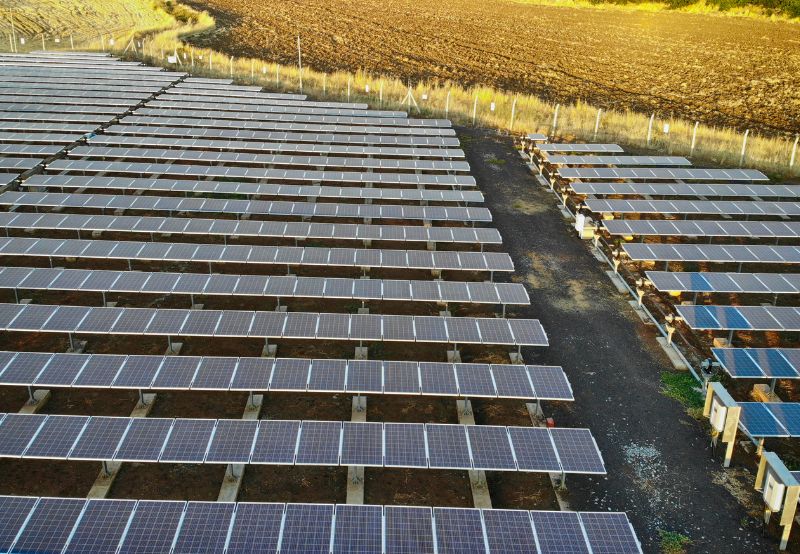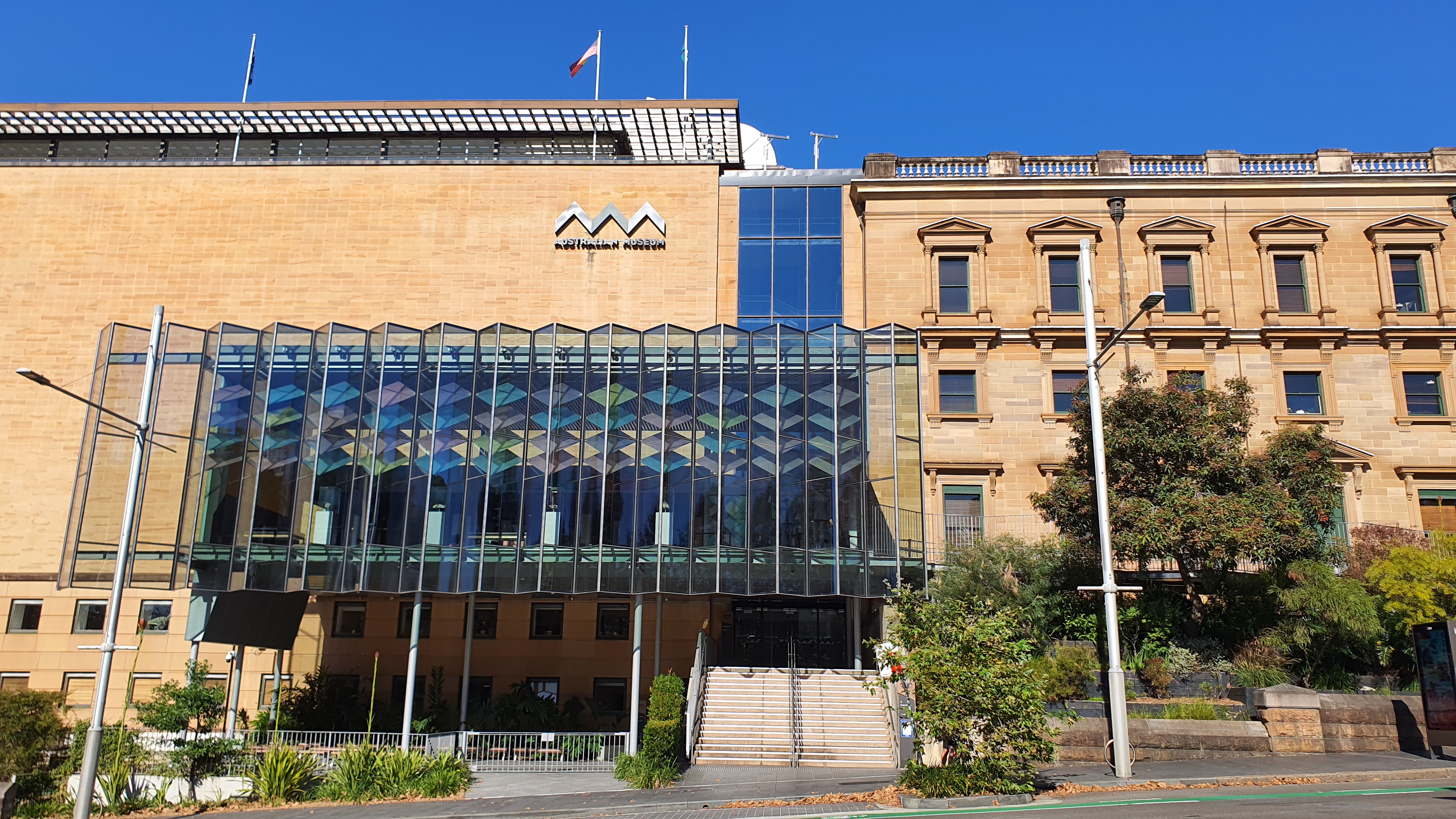While 84,000 delegates attended COP28 in Dubai, just 40,000-50,000 are expected at COP29 in Baku and COP30 in Belém.
UN climate chief Simon Stiell has said he hopes to see fewer people attend the annual COP climate negotiations after participants at COP28 in Dubai last December hit a record high of nearly 84,000.
Stiell said this month that he personally “would certainly like to see future COPs reduce in size”, telling an audience at London’s Chatham House think-tank that “bigger doesn’t necessarily mean better”.
In Dubai, where the 2023 summit was held from November 30 to December 13, the Expo City site was so large that important delegates were ferried around on golf buggies while electric scooters were available to get around the public area, known as the Green Zone.
“Size does not necessarily translate to the quality of outcomes,” Stiell said in London, noting that the UN climate change secretariat (UNFCCC) is discussing the issue with the hosts of COP29 in Azerbaijan this year and COP30 next year in Brazil.
Last week, Climate Home reporters visited the COP29 host city of Baku, the capital of Azerbaijan – on a tour sponsored by the COP29 presidency – and also the location of COP30, the Brazilian Amazon city of Belém, to see how preparations are going for the November 2024 and 2025 gatherings.
Azerbaijan’s government is expecting just 40,000 people to come to the Baku Olympic Stadium for the talks this year, while Belém’s remoteness, congested roads and lack of hotels are likely to substantially limit how many people can attend the “Amazon COP”.
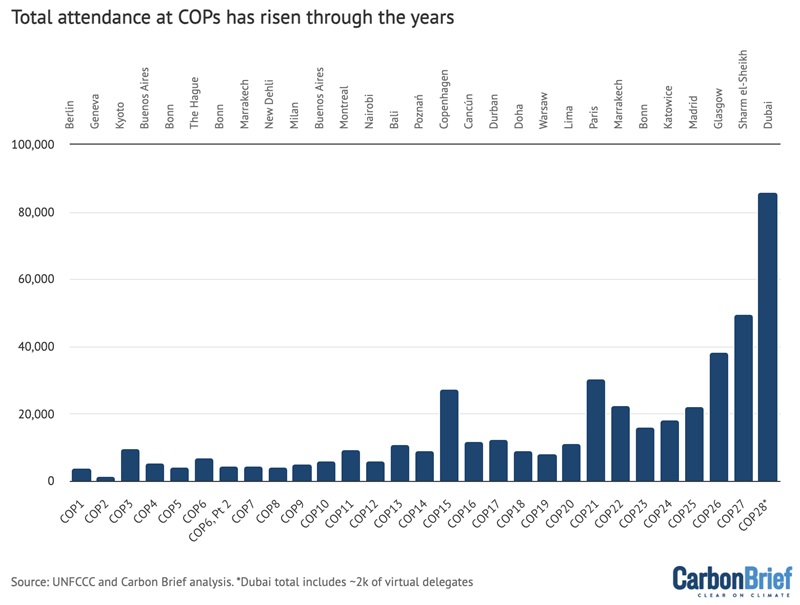
The number of people attending COPs has shot up in recent years. Close to 40,000 people went to COP26 in Glasgow, around 50,000 were in the Egyptian resort of Sharm el-Sheikh for COP27 and nearly 84,000 headed to Dubai last year. But most of the 28 COPs held since 1995 have been attended by fewer than 10,000 people.
Just over half of last year’s participants belonged to government delegations, with most of the rest comprising staff working at the conference or activists from non-governmental organisations (NGOs).
In practice, the boundaries of these categories are blurred though, as government delegations often include business representatives, NGO employees, journalists and others.
Baku’s Olympic Stadium
The government of Azerbaijan will host COP29 in the country’s Caspian seaside capital, Baku. A member of the organising committee told Climate Home they are expecting around 40,000 people.
The government has not had much time to prepare, as it was only tasked with the presidency last November at COP28 after Eastern Europe’s geopolitical divisions delayed the decision on which country would host the summit.
But it already has a venue: the Olympic Stadium on the outskirts of Baku. According to state media, COP29 chief operations officer Narmin Jarchalova said temporary structures will be built around the stadium to accommodate the negotiations and side events. These are likely to be in car-park areas.
The city is used to hosting major events. Ten thousand come each year for Formula One’s Baku Grand Prix and the 69,870-capacity Olympic Stadium has hosted the 2015 European Games, big concerts, the 2019 Europa League football final and Euro 2020 matches, although no Olympic Games despite the name.
Climate Home visited the area in April while in Baku, as part of a press trip organised by the COP29 presidency team. The stadium is connected to the city centre, where most hotels are located, by a Soviet-era metro railway with a one-way journey taking around 45 minutes.
A car journey should take about half of that, 20 minutes, but heavy traffic gridlocked the main roads in and out of Baku when Climate Home visited.
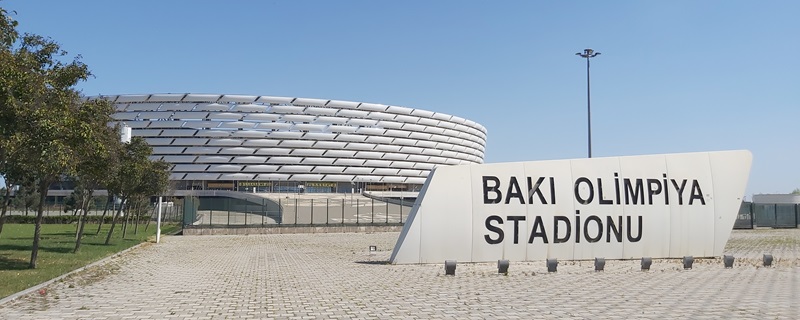
The Baku Olympic Stadium (Photo: Matteo Civillini)
Climate Home asked the COP29 team for information on how the temporary COP facilities will be built, powered and heated sustainably during the summit, but had received no response at the time of publication.
In February, Climate Home revealed that the government had told hotels in Baku not to sell rooms for COP29’s November 11-22 dates until further notice.
In London this month, UN climate chief Stiell said, with regard to the number of participants, that “we have an opportunity with Azerbaijan and we’re engaging with them”. He did not give further details.
COPs usually feature one big climate demonstration on the middle Saturday of the two-week talks. The UNFCCC is talking to the COP29 team about how this will be enabled.
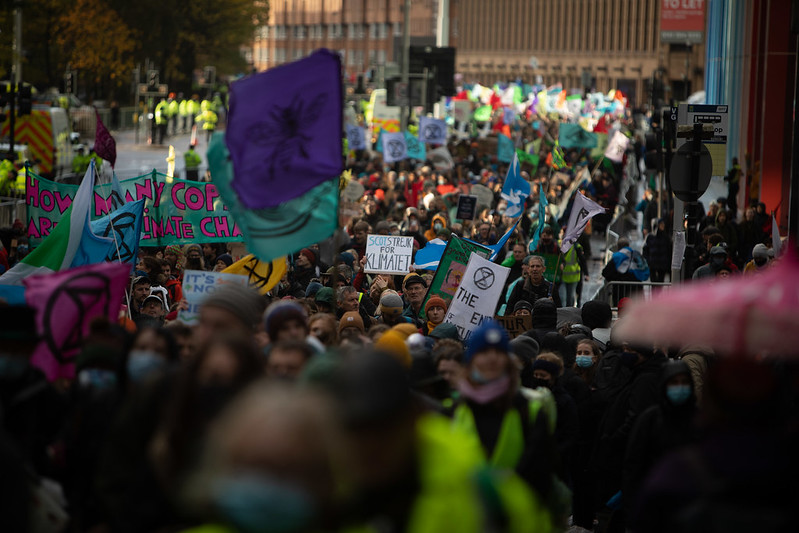
Protesters march on the middle Saturday of COP26 in Glasgow, UK, in 2021 (Photos: Insure Our Future)
In a meeting at the energy ministry last week, COP29 CEO and deputy energy minister Elnur Soltanov told journalists, including Climate Home, that these discussions were “fruitful”.
Human rights groups like Freedom House say Azerbaijan does not respect freedom of assembly. Police violently arrested opposition protesters in 2019.
Soltanov was asked if the climate march will be allowed to take place in the city, which is governed by Azerbaijan’s police force, or only in the COP29 venue, which is under the jurisdiction of UN security guards.
He replied that “this is too specific a question” but said that protest is “part and parcel of people expressing their views, their anger, their desperation”.
Brazil’s Amazon COP
On Belém, which is in northern Brazil near the Amazon rainforest, Stiell said he was “actively discussing with the Brazilians how we can reduce the size of the COP so that the logistics of it can be supported at that hosted destination”.
Last June, Brazilian climate ministry official André Corrêa Lago told local media he was expecting 40,000-50,000 people. But there are concerns that the city will struggle to cope with those numbers.
Belém is not a major tourist destination and has less than 6,000 hotel rooms. Even at last year’s Amazon Summit – a smaller event than a COP – participants reported difficulty finding rooms and rates soared.
Construction workers are currently turning a 1.6 km-long disused airport runway into the Parque de Cidade (City Park), which will be the size of about 70 football pitches. The park and its new buildings will be the main COP30 venue.
The government of Pará State says it is almost one-third finished. The federal government, meanwhile, is reportedly considering hosting part of COP30 in bigger cities like Sao Paulo or Rio de Janeiro.
A spokesperson for the federal government told Climate Home that “all possibilities to enable the reception of delegations and visitors are being evaluated”.
As well as the park and its new buildings, some of the conference will be held in an existing conference centre on the park’s southern tip called The Hangar – which hosted last year’s Amazon Summit.
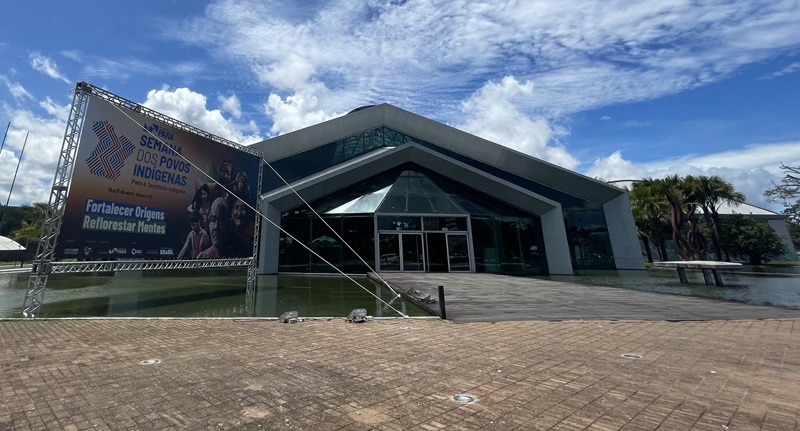
The Hangar convention centre (Photo: Alice Martins Morais)
For COP30 delegates though, finding a hotel room and getting to the venue are likely to be challenging.
A spokesperson for the COP30 organising committee said last week that while 84,000 people went to COP28, the peak daily attendance was just 41,000 at the beginning of the conference when heads of state made their speeches.
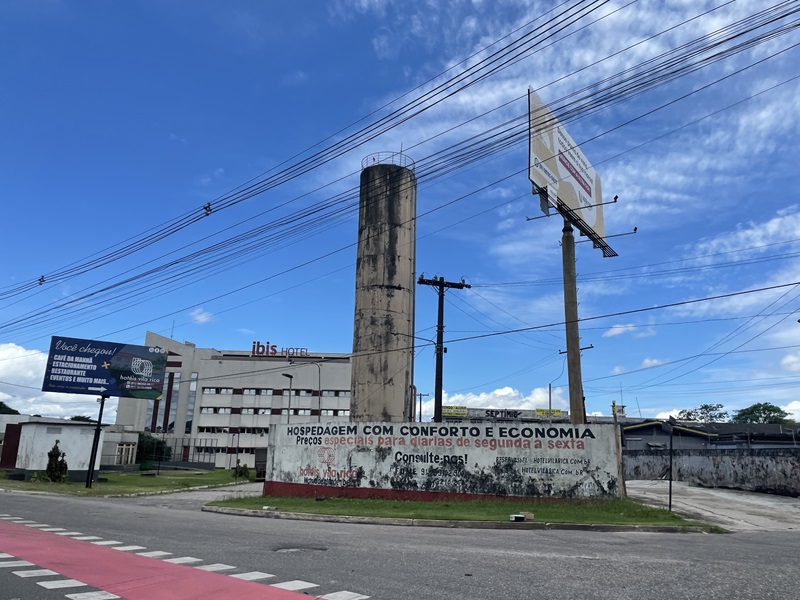
An Ibis hotel near the COP30 site (Photo: Alice Martins Morais)
The spokesperson told Climate Home the organisers are looking at bringing in cruise ships for COP participants to sleep on, refurbishing schools to serve as hostels and encouraging people to rent out their rooms on Airbnb.
To promote the “modernisation” of the city’s existing hotel rooms, the government has given hotel operators tax exemptions on purchases for new equipment like minibars, televisions and air-conditioning.
The city’s airport, which the government aims to improve before COP30, has few regular international connections and is over three hours by plane from Brazil’s major hubs like Sao Paulo and Rio de Janeiro.
There are no trains to Belém and getting the bus from Rio or Sao Paulo can take more than two days.
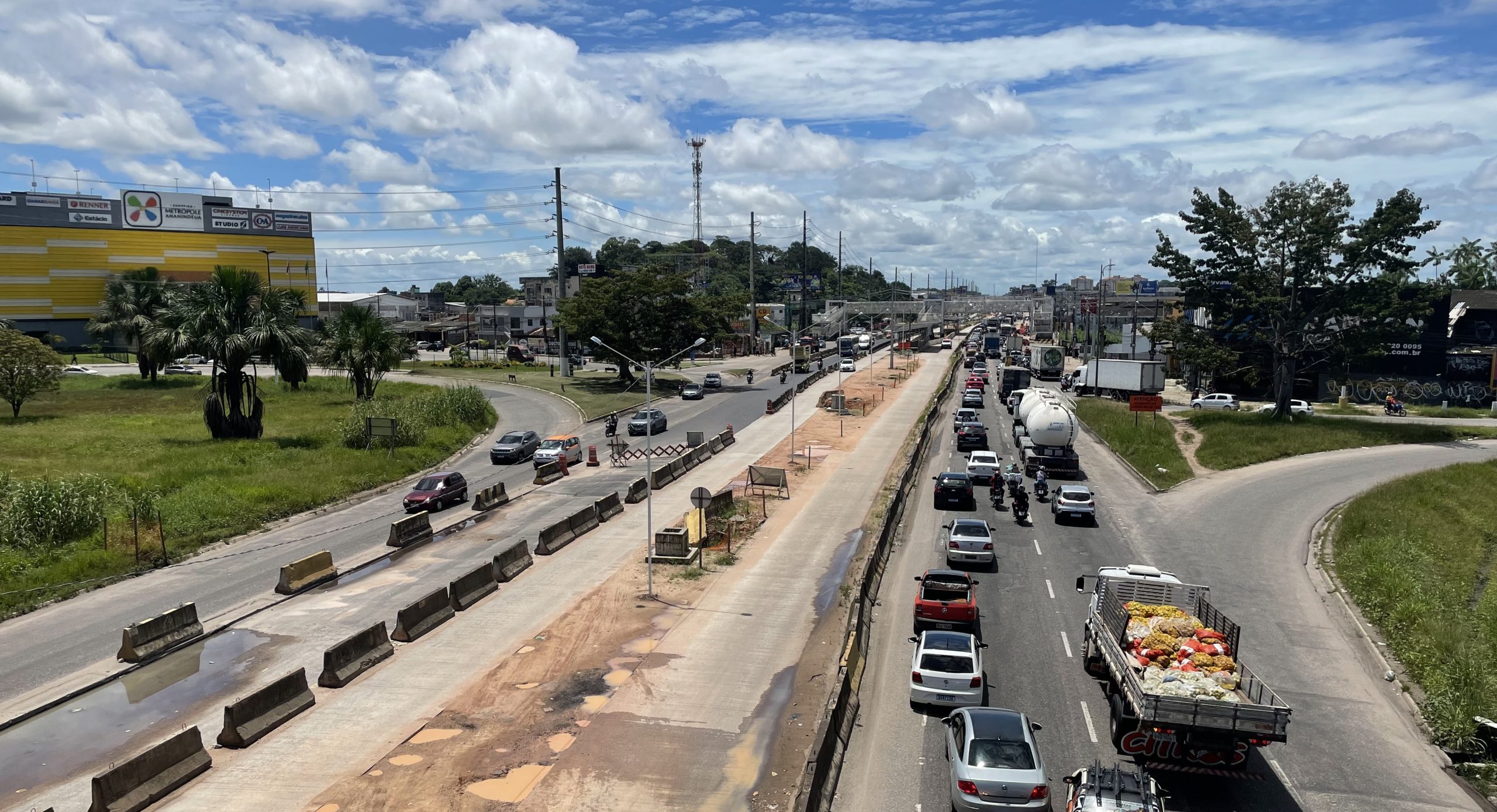
The Belém Bus Rapid Transit system is scheduled to be completed by COP30 (Photo: Alice Martins Morais)
Even inside the city, transport is challenging. The roads are congested, particularly in the centre where most of the hotels are, during rush-hour and when it rains.
The authorities have tried to solve the problem by widening roads and building dedicated bus lanes for a Bus Rapid Transit system.
While these are being constructed, they have made traffic worse – but the body in charge told Climate Home work is progressing according to schedule and should be completed by the second half of 2024 – well before the UN climate summit the following year.
“The new fleet will reinforce the capital’s transport system for COP30,” said a spokesperson for the Metropolitan Transport Management Centre, adding that 40 of the 265 new air-conditioned buses will be electric.
Nonetheless, the remoteness of the location is likely to translate into a bigger carbon footprint for delegates travelling from overseas.
While COPs have a sizable carbon footprint, researchers investigating misinformation have found this is often exaggerated on social and traditional media by those trying to undermine climate action.
Examples include pictures of private jets with captions falsely associating them with COP or of biofuel generators with captions erroneously claiming they are diesel.
Questioned about COPs’ carbon footprint by an audience member at London’s Chatham House, UN climate head Stiell replied that “at every COP, we get the reports – how many private planes [and] the CO2 footprint for hosting those COPs”.
But, he added, “taking a very pragmatic view, we need the right people around the table in order for this process to work and there will be a cost to that. How you ensure that those that are present are the ones necessary to contribute positively to the process is also important.”
(Reporting by Matteo Civillini in Baku, Alice Martins Morais in Belém and Joe Lo in London; videos by Fanis Kollias; editing by Joe Lo and Megan Rowling)


